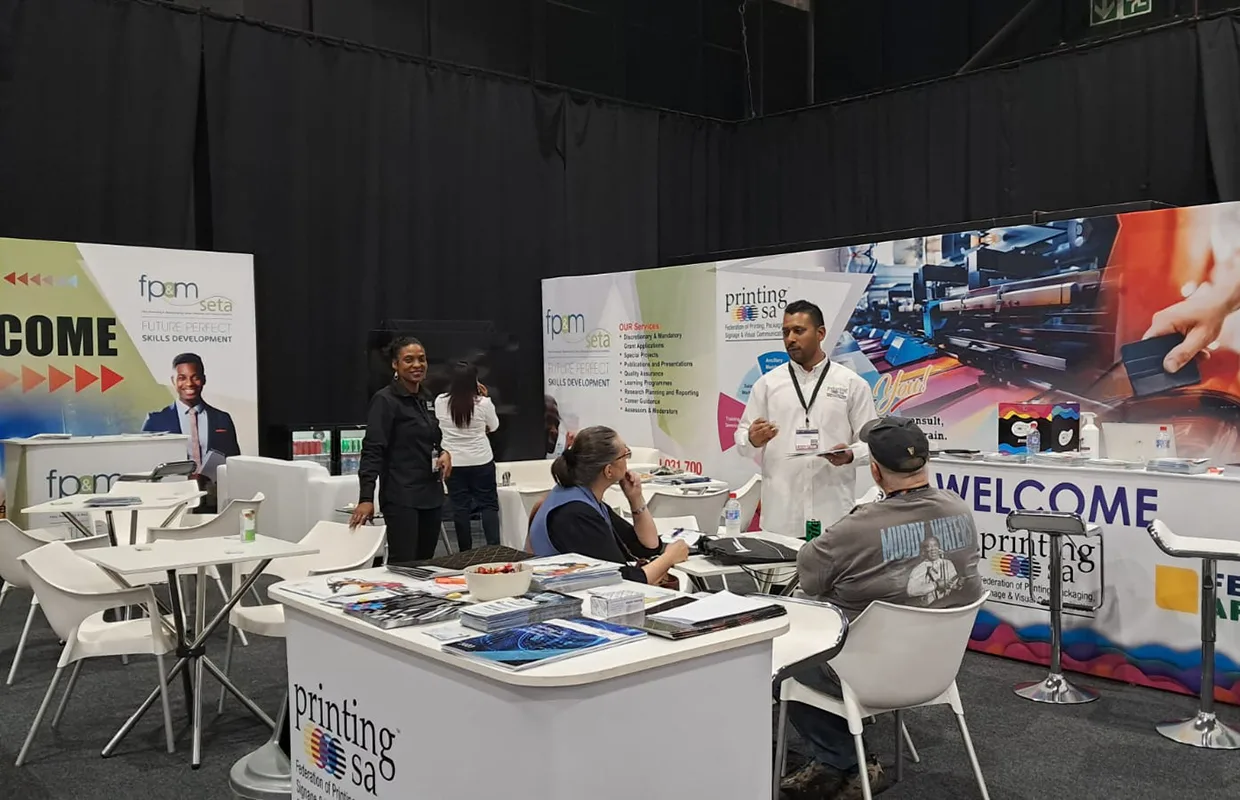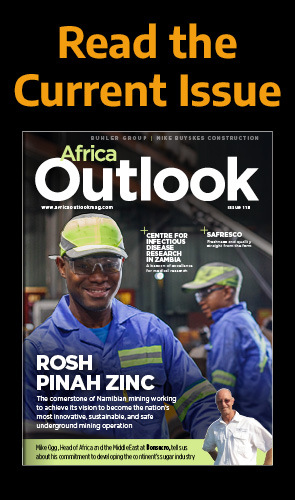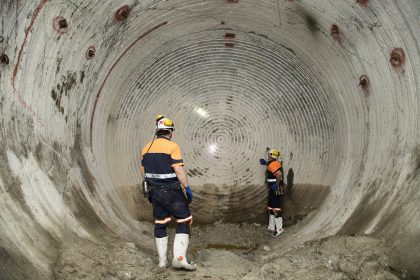From an economic contribution perspective, the printing and packaging industry plays a vital role in South Africa, where technology and sustainability also present exciting opportunities.
SOUTH AFRICA PRINTING AND PACKAGING SPOTLIGHT
Recent research published towards the end of 2024 confirms that two key elements of the packaging sector – plastic and paper packaging – have an estimated market value of ZAR65 billion in South Africa, whilst printing is worth an additional ZAR25 billion.
This combined market value of ZAR90 billion creates jobs for approximately 40,000 to 45,000 employees across the sector. Printing and packaging also feed into retail, food and beverage, pharmaceuticals, and logistics, creating additional jobs in these spaces.
Alongside its significant contributions to a developing economy, the industry is impactful on many different fronts. In education, for example, printing and packaging provide the vast majority of scholars with crucial learning materials.
In the consumer goods market, the industry plays a vital role in growing the brand equity of company owners. In the print packaging space, meanwhile, the industry profoundly impacts a wide gamut of safety, security, and product primary and enhancement features.
In the security segment, the industry is core to maintaining tactile security features that satisfy a plethora of commercial business requirements, including passports, ID cards, ballot papers, and more.
However, these fast-evolving product demands come with other exciting opportunities in terms of technology and sustainability.
In the dynamic landscape of South Africa’s commercial printing and packaging industry, the need for efficient, cost-effective, and sustainable solutions has never been more pressing.
The challenge for the sector is to implement eco-friendly practices and invest in printers and similar equipment to contribute meaningfully to a healthier planet.
There is also now a more concerted drive from the industry to adopt sustainable practices to improve South Africa’s export ability and reduce the country’s trade deficit.
This means dealing with the likes of Europe, North America, and Asia, where sustainability is at the forefront and subsequently being adopted by the sector in South Africa.
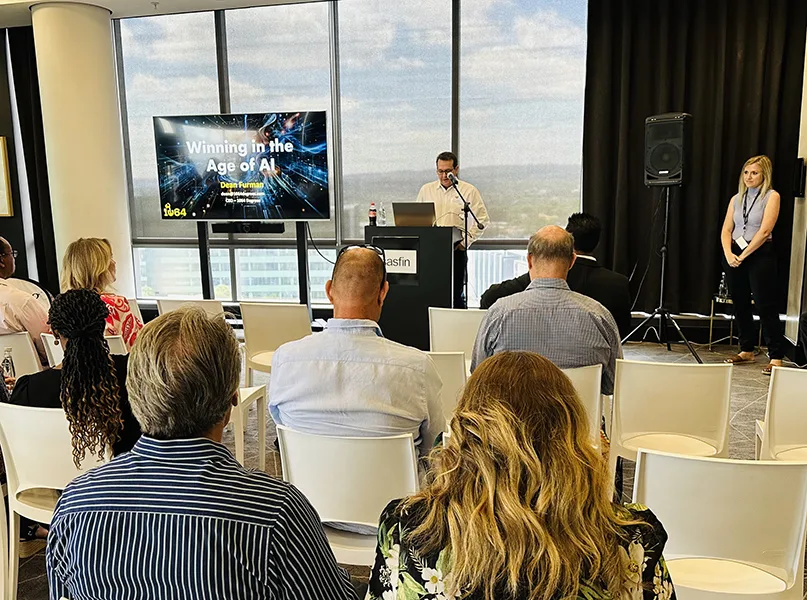
Q&A WITH PRINTING SA
Printing SA is the official voice and representative body of the printing, packaging, signage, and visual communications industries in South Africa. Jermaine Naicker, Managing Director, goes to print with his perspective on the sector’s socioeconomic impact.
Firstly, please introduce us to Printing SA as the official voice of the South African printing and packaging industry.
Jermaine Naicker, Managing Director (JN): Printing SA’s vision is to support, preserve, and grow the printing, packaging, signage, and visual communications industry.
Those three words encapsulate why we exist – we’re here to fundamentally ensure we provide support, preservation, and growth opportunities for the industry through conferring, consulting, campaigning, and training.
Whilst you may have various speciality industry associations, Printing SA broadly covers the printing and packaging industry. This includes specialisations in print, whether it’s digital printing, graphic design, lithographic printing, gravure printing, or flexographic printing.
Then, the packaging element segues into components of our industry that do printing for packaged goods, so it’s not mainstream packaging per se, but the actual printing that goes onto it.
Our core objective is to ensure the industry is sustainable in the future, and we do that in several ways. The first pillar we focus on is the commercial and technical aspects, i.e. the policy and advocacy role that we play.
From an advocacy perspective, we liaise and deal with government institutions and organs of state to ensure that when policy is developed for our industry, it is much more favourable from a business environment point of view than it would originally be without our intervention.
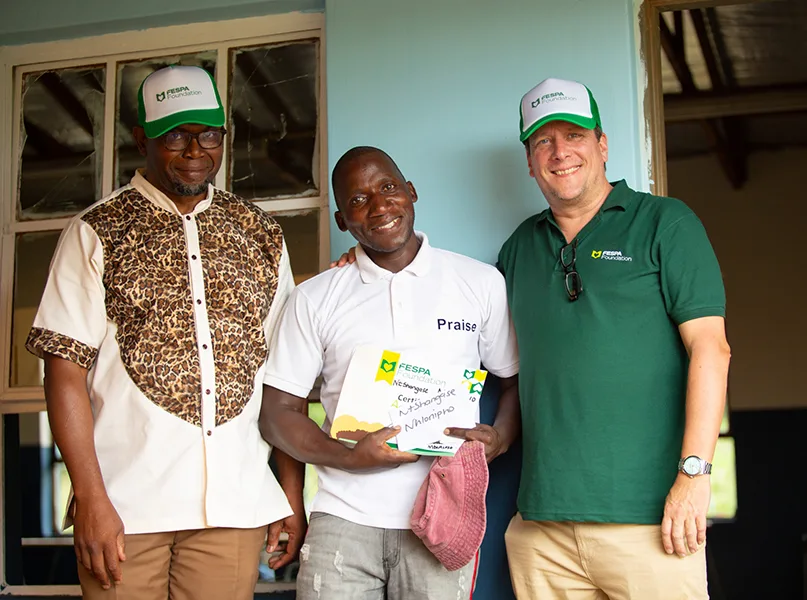
We’ve recently been working on some of the Employment Equity Act amendments impacting South Africa that will put sectoral targets into place, which could adversely impact the industry.
Then there’s the Air Quality Act where, from a sustainability perspective, there’s been some legislation touted by government that we’ve represented the industry on. It could have had serious financial implications for the industry and lead to a large demise of smaller players in the market, so we operate heavily in that space.
On that front, we’re working on the establishment of an industry master plan which serves as a strategic blueprint to drive growth, sustainability, and competitiveness in an evolving landscape. It would involve collaboration between industry stakeholders, government, trade unions, and training institutions to address key challenges and unlock opportunities for industry.
We do both human resource and technical consulting for the industry, and one of the bigger things we do is training and development, which speaks to the industry sustainable growth agenda of Printing SA. At the moment, we offer in excess of 70 courses, ranging from accredited to short, administrative, and technical programmes.
The last thing we do as the voice of the industry is assume a thought leadership responsibility. We host a plethora of seminars and disseminate information to keep our members abreast of the latest movements in both the industry and peripheries of the economy impacting the sector.

“There are different perceptions of what printing and packaging are about in the minds of people, which creates a challenge for us. In this way, we, as an industry association, also play a pivotal part in educating society about its various integrations and relevance”
Jermaine Naicker, Managing Director, Printing SA
What is your current take on the printing and packaging industry in South Africa? Is it particularly exciting or challenging to work in?
JN: Our industry is both exciting and challenging to work in. There are different perceptions of what printing and packaging are about in the minds of people, which creates a challenge for us. In this way, we, as an industry association, also play a pivotal part in educating society about its various integrations and relevance.
We’re seeing the greatest opportunities with the advent of technology and how we adopt all these technological changes to evolve as an industry.
Looking at the workforce coming in, nobody necessarily wants to operate manual machines, so the integration of technology gives us a new challenge in how we develop skills and change the perceptions of people coming in, which is exciting.
The integration of smart packaging technologies and fast-changing consumer preferences into the different adaptations and applications of print has become phenomenal.

What socioeconomic role does the printing and packaging industry play in South Africa, and how do you promote awareness of this?
JN: Up top is the employment and skills development aspect. The unemployment rate in South Africa currently sits at about 32 percent, which is significantly higher than other emerging and developed economies across the world.
We, therefore, focus very heavily on skills development as a conduit to creating employment opportunities. That also comes with a key partnership with the Fibre Processing and Manufacturing (FP&M) Sector, Education, and Training Authority (SETA), which works very closely with us to fund opportunities and interventions that we can use to narrow the skills gap and unemployment rate in South Africa. Through that funding, we provide unemployed people with upskilling, experiential learning, and internship opportunities.
Another programme that we still offer is the Foundational Learning Programme. Once this has been completed, we thrust learners into the industry and allow them the opportunity to gain first-hand experience of the wide gamut of complexities that the industry is comprised of, and how integrated this industry is in the daily lives of people.
Over the years, about 20 percent of learners have been absorbed by the sector and become qualified artisans, which is an impactful story to tell from a socioeconomic perspective.
Sustainability is another area we want to get heavily involved in to support the industry and provide information to centre operations and activities around eco-friendly business practices. That’s going to be our core focus over the next few years.
“The integration of smart packaging technologies and fast-changing consumer preferences into the different adaptations and applications of print has become phenomenal”
Jermaine Naicker, Managing Director, Printing SA
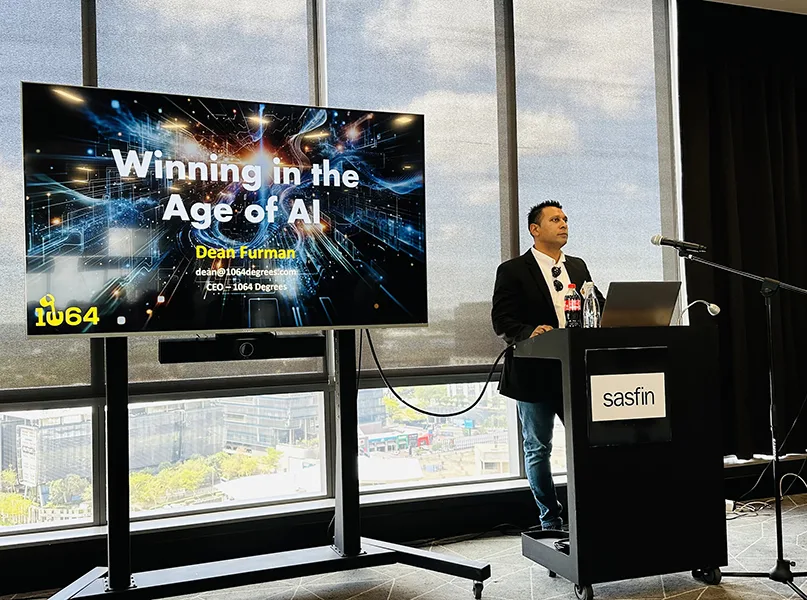
How does Printing SA represent industry interests and ensure all stakeholders and members prosper?
JN: As an industry association, everything we do is fundamentally driven by our members’ needs and what they require us to do for them.
Take training and development, for example – they would come to us with a skills gap that is having a downstream economic impact as these skills become more expensive, and say we need to arrest the situation.
Typically, we would come up with solutions for the industry to ensure we can close the skills gap and make more skills available to the industry.
Another example is if there’s a huge evolution and proliferation of technology and artificial intelligence (AI) impacting the industry, we’re asked to integrate AI into our training courses and develop new ones that are more aligned with technological advancements.
Or, perhaps members come back to us and say there’s a piece of legislation touted by government and it’s going to be unfavourable for the industry based on plausible reasons. In the recent case with the Employment Equity Act, there were sectoral targets put into place.
The government argued that because South Africa is such a diverse country, there are certain inclusion targets that need to be met in order to be compliant with operating a business. This came as a negative because the rationale behind the act and the practicality around it created significant complexities when operating a business in South Africa.
Printing SA had to take that, understand it, and spend money with attorneys and legal firms to fight this for our industry to represent its interests. Members drive what we do as an industry association, and those are just some of the ways in which we represent their interests.
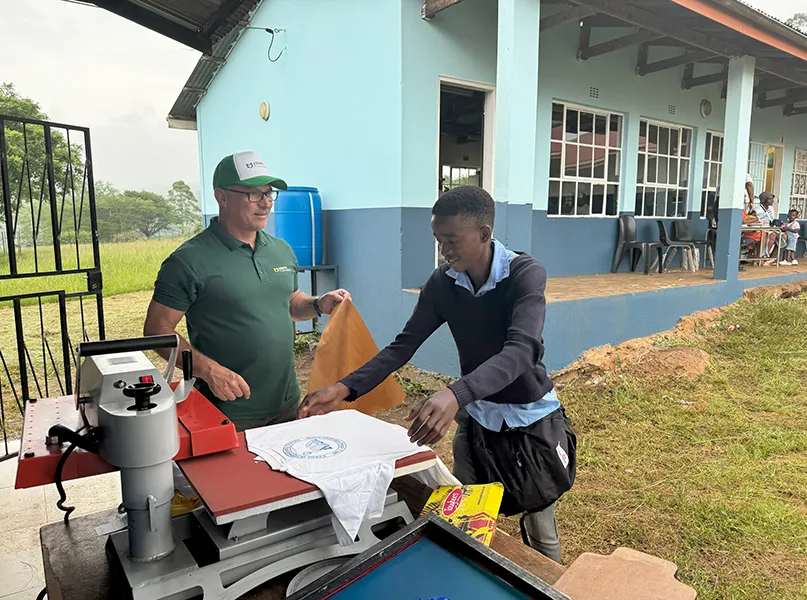
Equally, how does Printing SA act as the first port of call for government and other important local and international bodies wanting to engage the industry?
JN: As we are the collective voice for the printing and packaging industry, a lot of players around the globe approach us to access our members and the market.
From a government perspective, if we look at policy development, we are approached to engage on whether initiatives that are being developed are realistic and in line with the industry’s needs. If we determine that a policy has merit, based on member consultation, we refine it with them so that it doesn’t adversely impact the industry.
That’s how we engage with government on various fronts; it could be from a labour, sustainability, training and development, or even financial perspective.
Not many international bodies engage the industry except the various ones that Printing SA belongs to. For example, we belong to the World Print and Communication Forum (WPCF), a global conferencing forum that convenes annually and talks about the printing and packaging trends in particular countries. It also positions and communicates on a global front what industries around the world are doing and creates a core message around that.
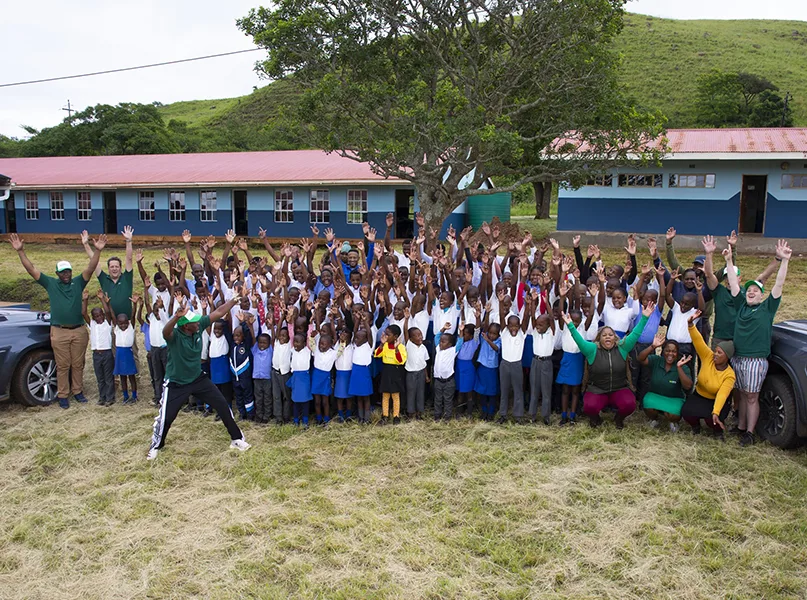
How do you see the South African printing and packaging industry developing over the next five years?
JN: More than ever, we’re seeing significant momentum being created as far as sustainable and eco-friendly products are concerned.
If you look at global statistics, South Africa is an emerging market and we have a higher population of youth and educated young people. Their inclination to understand and procure sustainable and eco-friendly practices is a lot greater, so the market is adjusting to that.
In e-commerce and packaging solutions, with the advent of online shopping, there’s demand for durable, lightweight, and cost-effective packaging. Different packaging solutions around protective, tamper-proof, and sustainable shipping materials are also being driven by e-commerce.
Digital transformation and smart packaging are now starting to gain a lot of traction in South Africa, and I believe in the next five years we will realise an increased presence of this in the market with the integration of automation, AI, and robotics.
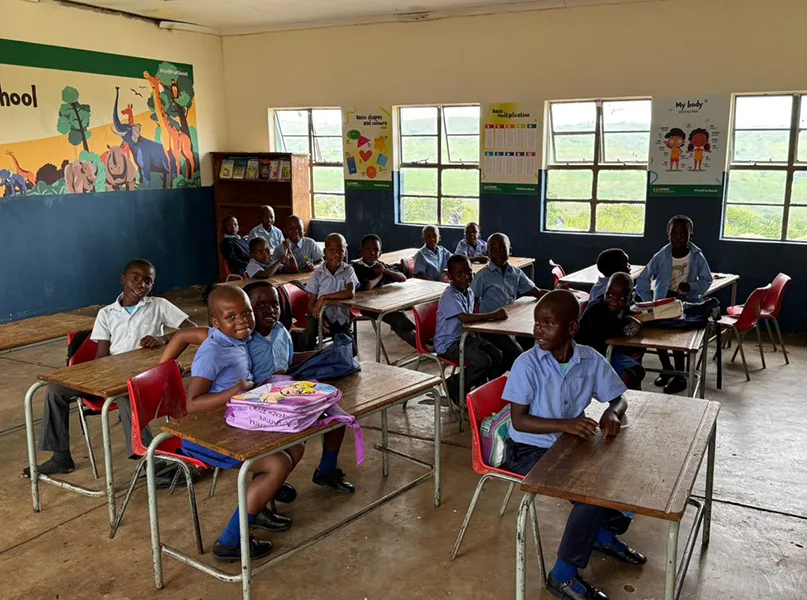
Localisation and industry growth opportunities speak to the industry master plan that I mentioned earlier. South Africa is looking to expand local production to reduce the reliance on imported materials and supply chain disruptions.
We’re also looking at growth in the export of packaging products, and government is now showing some interest in incentives for local manufacturers. There’s a drive towards the localisation of manufacturing capabilities in South Africa so that we can convert our raw materials into value-adding goods for the export market.
Lastly, skills development and job creation will be high up on the agenda for the industry and a core focus over the next five years. Technical and vocational education and training (TVET) colleges are being given targets to ensure their courses are aligned with industry demand and they are creating employment opportunities.
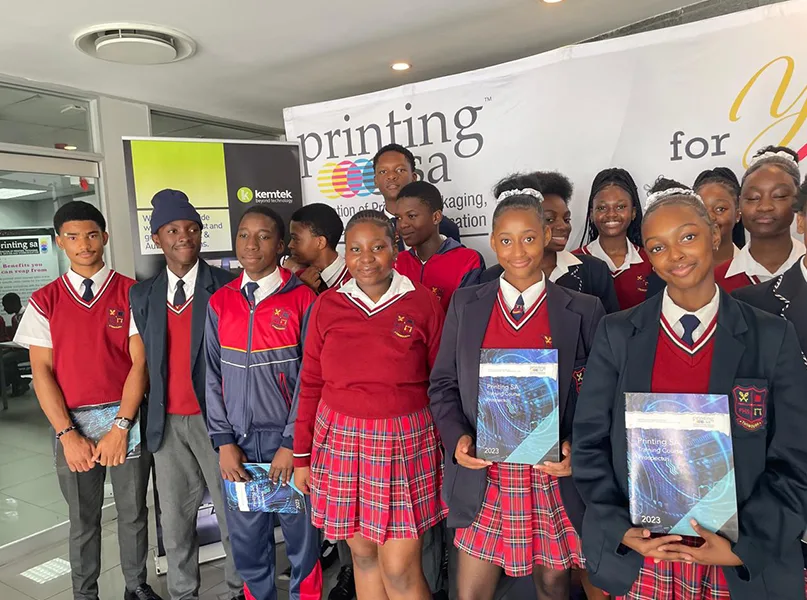
Finally, what are Printing SA’s key priorities in order to continue representing the South African printing and packaging industry?
JN: Firstly, the establishment of an industry master plan to protect the local industry, inject spending into it, and close the skills gap.
A lot of R&D support will be available for the industry so it can make informed decisions, and sustainability is going to be a core focus of ours.
The last one is thought leadership and how we keep the industry abreast. This will come in many forms, including thought leadership events to bring international knowledge exchange to South Africa so we’re well aware of what’s going on in the industry and can make informed decisions.



